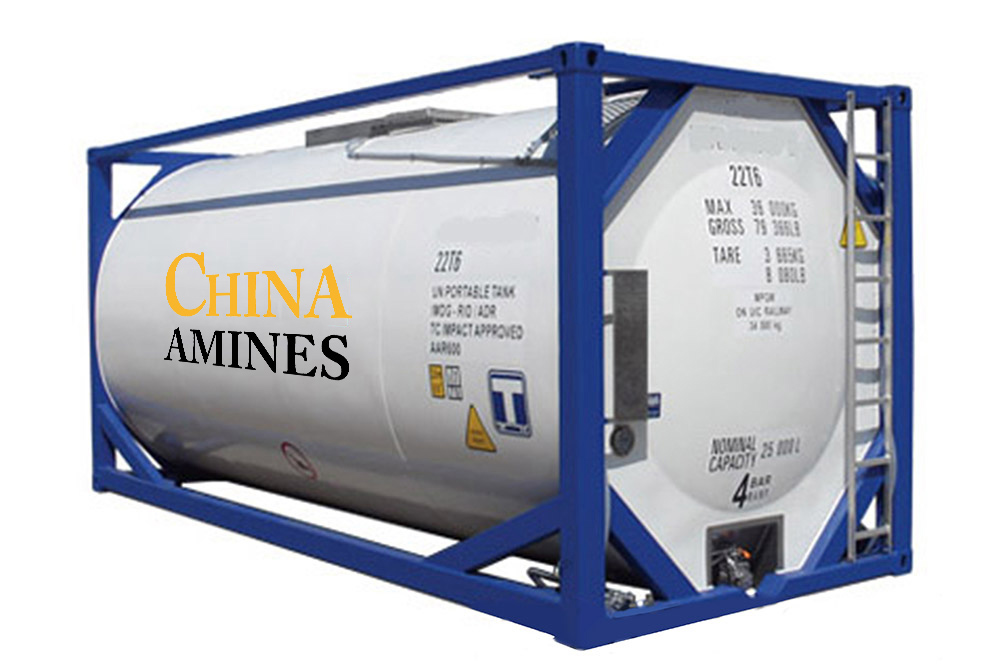1. Chemical Structure and Properties
Molecular Formula: C₃H₁₀ClN
Structural Formula: (CH₃)₃N·HCl
A tertiary amine hydrochloride formed by neutralizing trimethylamine (TMA) with hydrochloric acid.
Physical Properties:
Appearance: White crystalline powder or hygroscopic solid.
Melting Point: 260–265°C (decomposes).
Solubility: Highly soluble in water (>500 g/L at 25°C), ethanol, and methanol; insoluble in non-polar solvents.
Odor: Odorless (unlike volatile TMA gas).
Hygroscopicity: Absorbs moisture rapidly; requires airtight storage.
Chemical Properties:
Stability: Stable under dry conditions; decomposes upon heating to release TMA gas and HCl.
Reactivity: Acts as a weak acid (pKa ≈ 9.8); regenerates TMA when treated with strong bases.
2. Industrial Applications
Pharmaceuticals:
- Intermediate for antihistamines (e.g., tripelennamine) and neurological drugs (e.g., donepezil for Alzheimer’s).
- Salt Formation: Improves solubility and shelf-life of APIs (e.g., betaine HCl).
Agrochemicals:
- Herbicide precursor: Participates in glyphosate and paraquat synthesis.
- Pesticides: Intermediate in neonicotinoid production (e.g., imidacloprid).
Organic Synthesis:
- Catalyst for alkylation and quaternization reactions (e.g., choline chloride formation).
- Surfactant precursor: Converts into trimethylamine oxide used in detergents and softeners.
Electronics:
- Etching/Cleaning Agent: Removes organic residues on silicon wafers during chip fabrication.
3. Safety and Toxicology
Health Hazards:
- Potential liver/kidney toxicity (limited data); not classified as carcinogenic (IARC).
- Skin/Eye Contact: Causes irritation and chemical burns (rabbit skin LD50 ~600 mg/kg).
- Inhalation: Dust or decomposition fumes irritate respiratory tract; handle as TMA hazard.
- Ingestion: Moderately toxic (oral LD50 rat: ~1,500 mg/kg); causes GI tract irritation.
Handling Precautions:
- PPE: Nitrile gloves, protective goggles, and N95 respirator.
- Storage: Store in airtight, moisture-resistant containers in cool, dry environment.
- First Aid: Rinse exposed areas thoroughly with water; seek medical attention for severe exposure.
4. Environmental and Regulatory Compliance
Environmental Impact:
- Aquatic Toxicity: LC50 (fish, 96h): 200–400 mg/L; EC50 (daphnia): 100–200 mg/L.
- Biodegradability: Readily biodegradable (OECD 301D: >70% in 28 days).
- Persistence: Low due to hydrolysis in aqueous environments.
Regulatory Frameworks:
- GB 13690-2009 (China): Classified as General Chemical; follow standard safety practices.
- OSHA (USA): No established PEL; general duty clause applies.
- EPA: Listed on TSCA Inventory.
- CLP (EU): Classified as Skin Irrit. 2 (H315), Eye Irrit. 2 (H319), Acute Tox. 4 (H302).
- REACH (EU): Registered with full SDS obligations for transport and disposal.
Transport:
- UN Number: Not classified as hazardous; general cargo transport allowed (non-DG).
5. Case Studies and Application Insights
Case 1: Choline Chloride Production
- Process: TMA HCl reacts with ethylene oxide to produce choline chloride.
- Efficiency: 95% yield at 80°C using zeolite catalyst (BASF proprietary process).
Case 2: Semiconductor Wafer Cleaning
- Application: Intel uses aqueous TMA HCl to remove organic residues during 10nm process.
- Performance: 99.9% removal efficiency without damaging substrate.
Comparative Analysis:
- Pros: Solid form reduces volatility and flammability risks; safer storage and transport.
- Cons: Requires chemical regeneration (e.g., basification) to access free TMA for reactions.


